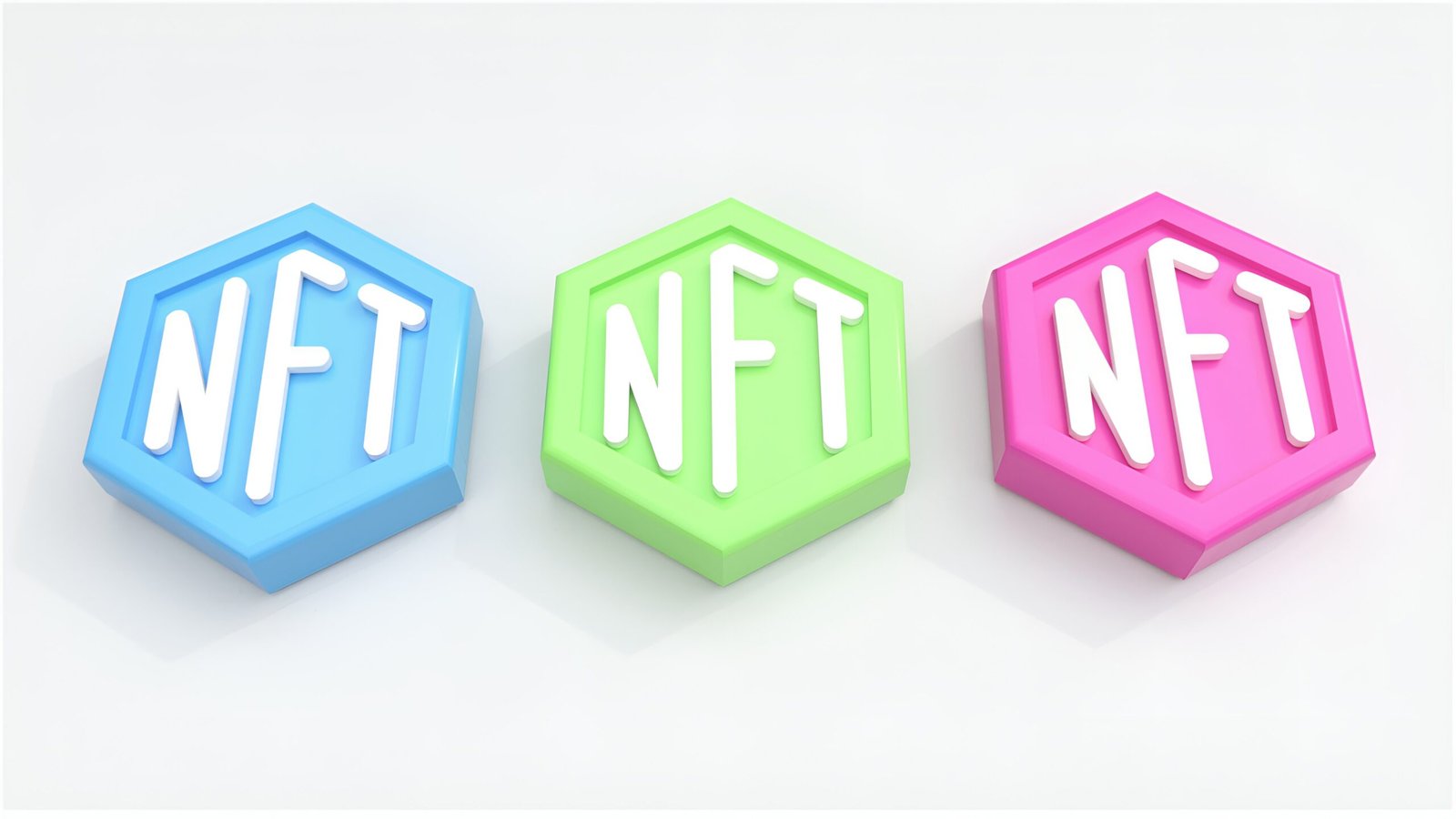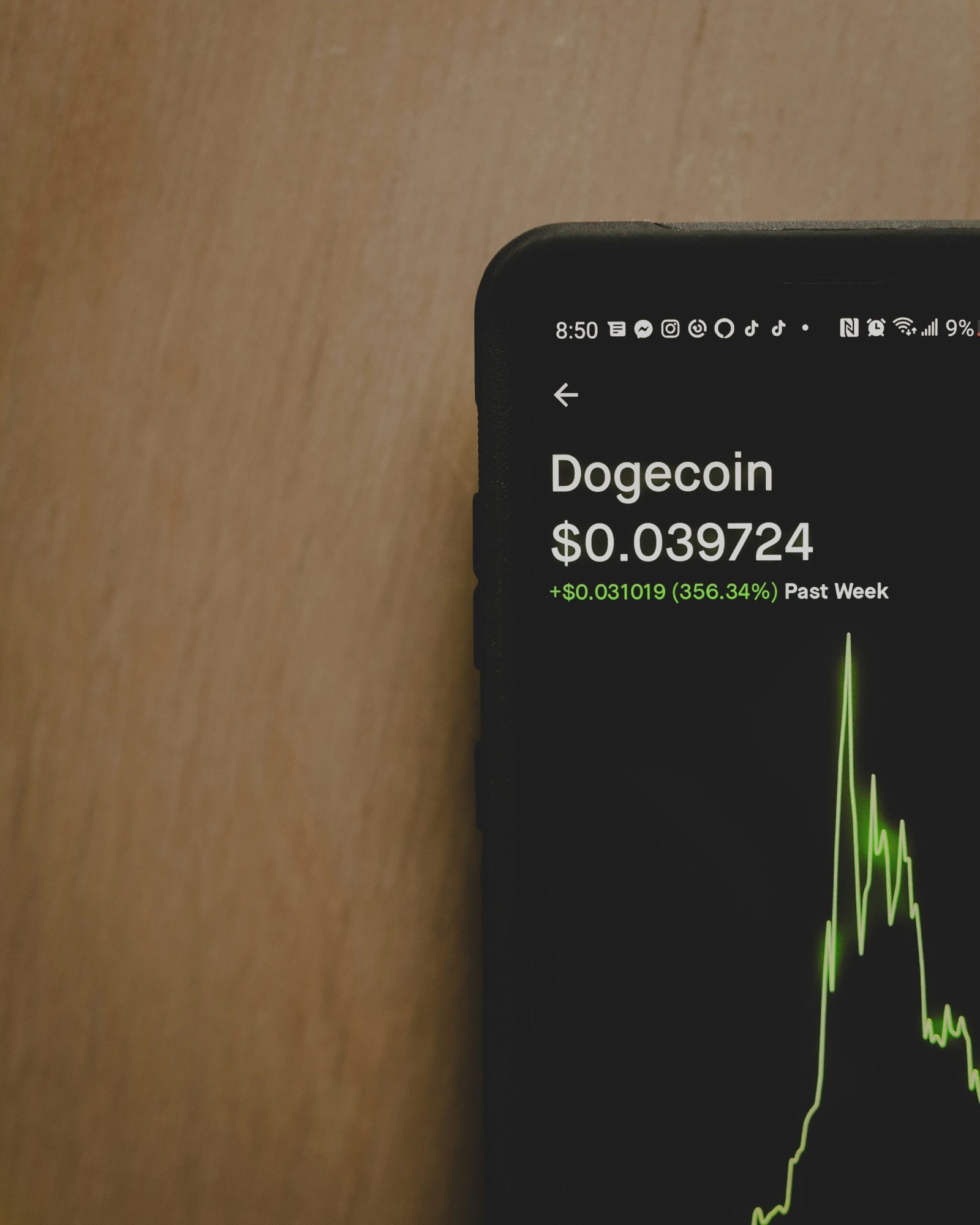Introduction to NFTs
Non-Fungible Tokens, commonly known as NFTs, represent a unique and revolutionary development in the blockchain and cryptocurrency space. Unlike traditional cryptocurrencies such as Bitcoin and Ethereum, which are fungible and can be exchanged on a one-to-one basis, NFTs are indivisible and unique. Each NFT contains distinct information that makes it different from any other NFT, thereby granting them their non-fungible status.
The uniqueness of NFTs is rooted in their design. While one Bitcoin is identical to another Bitcoin, one NFT is not equivalent to another NFT. This uniqueness is what drives the value of NFTs, as they often represent ownership of a specific digital item, whether it be art, music, virtual real estate, or even rare collectibles. With the aid of blockchain technology, the ownership and provenance of each NFT can be verified, ensuring authenticity and preventing duplication.
The indivisibility of NFTs further distinguishes them from cryptocurrencies. Where you can hold a fraction of a Bitcoin, NFTs cannot be divided into smaller units; they exist as whole items. This characteristic is essential for maintaining the integrity and value of the assets they represent. For instance, owning a digital artwork as an NFT means you possess the entire piece, not just a fraction of it.
The surge in popularity and mainstream interest in NFTs has been nothing short of phenomenal. High-profile sales, such as Beeple’s “Everydays: The First 5000 Days,” which sold for $69 million at Christie’s auction house, have catapulted NFTs into the global spotlight. Celebrities, artists, and even major corporations are now exploring the potential of NFTs, contributing to their growing acceptance and integration into various industries.
In essence, NFTs are paving the way for a new era of digital ownership, offering unprecedented opportunities for creators and collectors alike. Their unique properties of indivisibility and verifiable ownership make them a valuable addition to the evolving digital economy.
The Technology Behind NFTs
Non-Fungible Tokens (NFTs) are underpinned by blockchain technology, which provides a decentralized and transparent ledger system. This blockchain infrastructure is crucial for ensuring the authenticity and ownership of NFTs. Each NFT is assigned a unique identifier that distinguishes it from other tokens, and this identifier is recorded on the blockchain, making it immutable and verifiable. This secure and permanent record ensures that ownership can be reliably tracked, preventing counterfeits and fraudulent activities.
Smart contracts play an essential role in the creation and management of NFTs. These self-executing contracts, with the terms of the agreement directly written into code, automate various processes associated with NFTs. They enable the minting (creation), buying, selling, and transferring of NFTs without the need for intermediaries. Smart contracts also enforce the rules and conditions specified by the creators, such as royalty payments to original artists upon resale of their works. This automation not only enhances efficiency but also ensures transparency and trust in NFT transactions.
Several blockchain platforms facilitate the issuance and trading of NFTs, with Ethereum being the most prominent. Ethereum’s robust smart contract functionality and widespread adoption have made it the preferred choice for many NFT projects. However, other platforms like Flow and Binance Smart Chain are also gaining traction due to their lower transaction fees and faster processing times. Flow, for instance, is specifically designed for high-performance applications like digital collectibles and games, making it a popular choice for NFT developers.
Metadata is another critical component of NFTs. Metadata defines the characteristics and details of an NFT, such as its name, description, image, and other attributes. This information is often stored off-chain and linked to the NFT via a hash, ensuring that the data remains accessible and verifiable. The richness of metadata enhances the value and uniqueness of each NFT, providing context and provenance that are essential for collectors and investors.
How NFTs Are Created and Sold
The creation and sale of Non-Fungible Tokens (NFTs) involve several key steps, starting with the minting process. Minting an NFT begins with the creation of a digital asset, which can range from digital art, music, videos, or virtual items in games. Once the digital asset is ready, it needs to be uploaded onto a blockchain, the technology that powers NFTs. Ethereum is the most commonly used blockchain for this purpose due to its robust support for smart contracts, although other blockchains like Binance Smart Chain and Flow are also popular.
To mint an NFT, artists and creators typically use platforms known as NFT marketplaces. Popular marketplaces include OpenSea, Rarible, and Foundation. These platforms provide user-friendly interfaces for uploading digital files and minting them into NFTs. The process involves attaching metadata to the digital asset, which describes the NFT and includes details like the name of the creator and a description of the artwork. Once the metadata is attached, the asset is converted into a unique token on the blockchain.
After minting, the next step is listing the NFT for sale. Creators can set a fixed price for their NFTs or opt for an auction format, where potential buyers place bids over a specified period. Auction formats can vary, with some being English auctions (highest bid wins) and others being Dutch auctions (price decreases until a buyer is found). Additionally, creators can set royalties, ensuring they receive a percentage of sales each time the NFT is resold in the secondary market.
While creating and selling NFTs presents lucrative opportunities, it is essential to consider the costs associated with this process. One of the most significant expenses is gas fees, which are charges for the computational power required to execute transactions on the blockchain. These fees can fluctuate based on network congestion and can be substantial, impacting the overall profitability of the NFT sale.
Overall, the creation and sale of NFTs involve multiple steps and considerations. By understanding the minting process, listing strategies, and associated costs, creators can navigate the NFT market more effectively and maximize their success.
Use Cases of NFTs
Non-fungible tokens (NFTs) have emerged as a revolutionary technology with diverse applications across multiple industries. One of the most prominent uses of NFTs is in the realm of digital art. Digital artists can now tokenize their creations, allowing them to sell unique digital pieces directly to collectors. This has given rise to a new market, where artists like Beeple have made headlines by selling digital art for millions of dollars. The authenticity and ownership of these artworks are guaranteed by the blockchain, providing both artists and buyers with unprecedented security and transparency.
Beyond digital art, NFTs have also found a significant foothold in the music industry. Musicians are leveraging NFTs to release exclusive tracks, albums, and even concert tickets. This approach not only provides a new revenue stream but also allows fans to own a piece of their favorite artist’s work. For example, artists like Kings of Leon have released entire albums as NFTs, offering exclusive benefits to NFT holders.
The gaming industry is another sector where NFTs are making a substantial impact. Game developers are creating in-game assets, such as characters, skins, and weapons, as NFTs. This enables players to truly own their virtual items and even trade them outside the game’s ecosystem. Popular games like “Axie Infinity” and “CryptoKitties” have demonstrated the immense potential of integrating NFTs into gaming, fostering a new economy within the virtual gaming world.
Virtual real estate is another innovative application of NFTs. Platforms like Decentraland and The Sandbox allow users to purchase, develop, and sell virtual land as NFTs. This virtual real estate can be used for various purposes, including building virtual stores, art galleries, or social spaces, thus creating a metaverse with endless possibilities.
Collectibles have always been a natural fit for NFTs. Traditional collectible items such as trading cards, memorabilia, and rare items can now be digitized and tokenized. For instance, NBA Top Shot has popularized the concept by selling officially licensed NBA collectible highlights as NFTs, which fans can buy, sell, and trade.
Looking ahead, the potential applications of NFTs are vast and continually evolving. Future innovations might include NFT-based identity verification, digital twins of physical assets, and novel forms of decentralized finance (DeFi). As the technology matures, it is poised to unlock new opportunities and reshape various industries, solidifying NFTs as a cornerstone of the digital economy.
Benefits and Opportunities of NFTs
Non-fungible tokens (NFTs) have introduced a paradigm shift in the digital realm, offering a plethora of benefits to creators, collectors, and investors alike. One of the most significant advantages for artists and content creators is the establishment of new revenue streams. By tokenizing their work, creators can directly sell their digital art, music, videos, or other digital content to consumers without the need for intermediaries. This direct-to-consumer model ensures that creators receive a larger share of the profits and maintain greater control over their intellectual property.
For collectors, NFTs provide a novel way to own and display unique digital assets. Unlike traditional digital files, which can be easily replicated, NFTs are underpinned by blockchain technology, ensuring true ownership and provenance. This means that collectors can verify the authenticity and history of an asset, adding an additional layer of value and exclusivity. Furthermore, the digital nature of NFTs allows for innovative and interactive ways to showcase collections in virtual galleries or through augmented reality experiences.
Investors are also finding compelling opportunities within the NFT space. As the market for unique digital items grows, so does the potential for these assets to appreciate in value. Early adopters of NFTs have witnessed significant returns on their investments, as rare and sought-after tokens have surged in price. Additionally, the concept of fractional ownership is gaining traction, allowing investors to own a fraction of high-value assets. This democratizes access to valuable items, enabling a broader range of individuals to participate in the market.
Beyond the immediate financial incentives, NFTs are also championing the democratization of access to valuable assets. By fractionalizing ownership, not only is the barrier to entry lowered, but it also fosters a more inclusive and diverse market. This inclusivity can spur innovation and creativity, driving the entire ecosystem forward.
Challenges and Criticisms of NFTs
Non-fungible tokens (NFTs) have garnered significant attention in recent years, but they are not without their challenges and criticisms. One of the primary concerns associated with NFTs is the environmental impact. The blockchain networks that underpin NFTs, especially those using proof-of-work mechanisms like Ethereum, consume substantial amounts of energy. This has raised alarms about the carbon footprint of minting and trading NFTs, drawing criticism from environmentalists and prompting calls for more sustainable practices. In response, there are ongoing efforts to develop more energy-efficient blockchain technologies, such as Ethereum’s transition to a proof-of-stake consensus mechanism, which promises to significantly reduce energy consumption.
Another major issue is related to copyright and intellectual property. The decentralized nature of blockchain can make it difficult to enforce copyright laws, leading to potential infringements. Artists have reported instances of their work being tokenized and sold without their permission, sparking debates over digital ownership and the protection of intellectual property. To address these concerns, some platforms are implementing stricter verification processes to ensure that only authentic creators can mint NFTs, and there is a push for clearer legal frameworks to govern digital assets.
The risk of fraud and scams also looms large in the NFT space. As with any emerging market, opportunists seek to exploit unsuspecting participants. Fake marketplaces, counterfeit NFTs, and phishing schemes are prevalent, posing significant risks to buyers and sellers alike. To mitigate these risks, reputable NFT platforms are enhancing security measures, including multi-factor authentication and robust vetting procedures for artists and collectors.
Volatility and speculation present additional challenges. The NFT market is characterized by extreme price fluctuations, with assets often experiencing rapid and unpredictable changes in value. This volatility can be attributed to speculative behavior, where prices are driven more by hype and less by intrinsic value. While some view this as an opportunity for high returns, it also poses risks, particularly for new investors who might not fully understand the market dynamics. Educating participants and promoting responsible trading practices are essential steps toward fostering a more stable and sustainable NFT ecosystem.
Regulatory and Legal Considerations
As non-fungible tokens (NFTs) gain prominence in the digital landscape, navigating the regulatory and legal frameworks becomes paramount for both creators and investors. The regulatory environment for NFTs is still evolving, with different countries and jurisdictions adopting varied approaches to legislation and enforcement.
In the United States, the Securities and Exchange Commission (SEC) has been scrutinizing NFTs to determine if they qualify as securities under existing laws. This is especially pertinent for NFTs that promise future profits from the efforts of others. The Internal Revenue Service (IRS) has also issued guidance indicating that NFTs are subject to capital gains tax. Meanwhile, intellectual property rights, including copyright and trademark issues, are increasingly coming to the fore, necessitating careful consideration from creators regarding the use of protected content in their NFTs.
Across the Atlantic, the European Union is also taking steps to regulate the burgeoning NFT market. The EU’s proposed MiCA (Markets in Crypto-Assets) regulation aims to create a consistent framework for crypto-assets, which could include NFTs. Member states, however, may implement additional national regulations to address specific concerns. For example, Germany has been proactive in establishing guidelines for digital assets, including NFTs, focusing on compliance with anti-money laundering (AML) laws.
In Asia, countries like Singapore and Japan are leading the regulatory development for NFTs. Singapore’s Monetary Authority (MAS) provides a clear regulatory framework for digital payment tokens, which could extend to certain types of NFTs. Japan has also established regulations under its Payment Services Act and Financial Instruments and Exchange Act to oversee digital asset transactions, including NFTs.
Notable legal cases have already set precedents in the NFT space. For instance, the Hermes v. Rothschild case in the U.S. highlighted the importance of trademark laws in the NFT marketplace. Such cases underscore the necessity for creators and investors to seek legal advice to navigate potential pitfalls.
For creators and investors alike, understanding the regulatory and legal landscape is crucial. Engaging with legal professionals who specialize in digital assets can provide essential guidance, helping to ensure compliance with diverse regulations and safeguarding intellectual property rights. As the NFT market continues to mature, staying informed about legal developments will be vital for sustainable success.
The Future of NFTs
The future of Non-Fungible Tokens (NFTs) promises to be as dynamic and transformative as their inception. One of the most anticipated advancements in the NFT space is improved scalability. Currently, high transaction fees and slower processing times on popular blockchain platforms like Ethereum present significant hurdles. Emerging Layer 2 solutions and the adoption of more scalable blockchains, such as Solana and Polygon, aim to mitigate these issues, enhancing the user experience and broadening accessibility.
Interoperability between different blockchain platforms is another trend poised to shape the future of NFTs. As it stands, the siloed nature of various blockchain ecosystems can limit the fluidity and utility of NFTs. Progress in cross-chain technologies will enable seamless transfer and interaction of NFTs across multiple platforms, thereby fostering a more integrated and versatile digital asset ecosystem. This interoperability could unlock new possibilities for users, such as the ability to use an NFT purchased on one platform in applications or games hosted on another.
Mainstream adoption of NFTs is likely to evolve significantly, driven by increasing awareness and novel use cases. The integration of NFTs into everyday transactions and experiences, such as event ticketing, real estate, and personal identification, signifies a shift towards a more digitized economy. As mainstream companies and brands continue to explore and invest in NFTs, we can expect a surge in innovative applications that resonate with a broader audience.
Emerging sectors stand to benefit immensely from the proliferation of NFTs. The art and entertainment industries, for instance, have already seen substantial impacts. Future growth may extend to sectors like fashion, gaming, and education, where NFTs can introduce new ways of engagement, ownership, and monetization.
Lastly, regulatory changes will inevitably shape the NFT market’s trajectory. As governments and regulatory bodies become more involved, the landscape will likely see increased scrutiny aimed at protecting consumers and ensuring market stability. While this could introduce additional compliance requirements, it may also lend legitimacy and encourage wider acceptance of NFTs in the traditional financial ecosystem.


